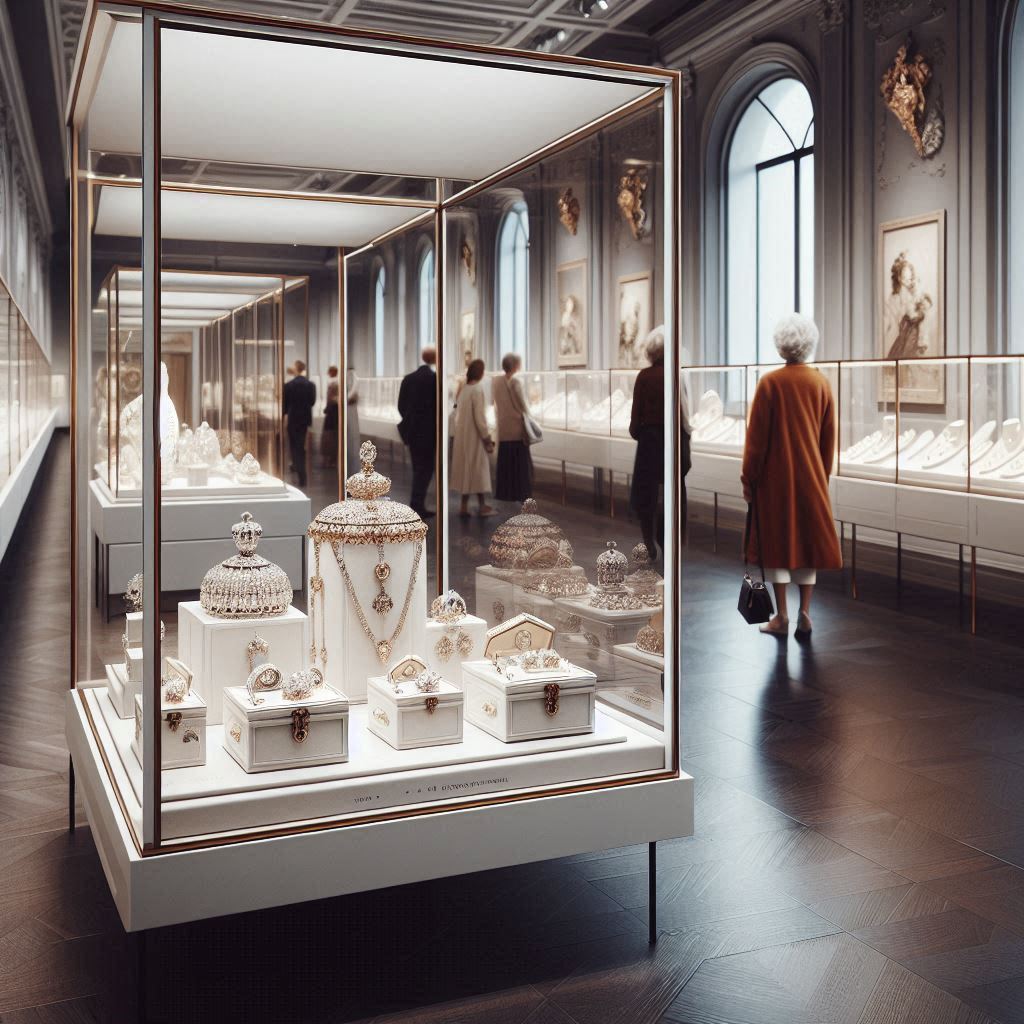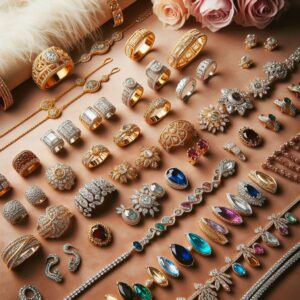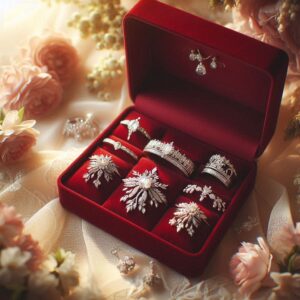The Ottoman Empire, which spanned from the late 13th century to the early 20th century, was renowned for its rich cultural heritage and artistic achievements. Among its many art forms, jewelry held a significant place, reflecting the empire’s opulence, craftsmanship, and the symbolic meanings attributed to various gemstones and designs.
Materials and Techniques
Ottoman jewelers employed a variety of materials and techniques to create intricate pieces:
- Metals: Gold and silver were predominantly used, often combined to enhance the visual appeal of the jewelry.
- Gemstones: Precious and semi-precious stones such as emeralds, rubies, diamonds, pearls, coral, jade, and agate were commonly incorporated. Each stone was believed to possess specific powers and significance. For instance:
- Emeralds: Symbolized love and hope, believed to bring wisdom and calmness to the wearer.
- Rubies: Considered the most powerful gem, associated with vitality and royalty, thought to bring peace and contentment.
- Diamonds: Symbols of innocence and constancy, often used to enhance the power of other stones they were paired with.
Source: Daily Sabah
- Filigree: A technique involving twisting and bending thin metal wires to create delicate patterns, showcasing the jeweler’s skill and artistry.
- Enameling: Fusing powdered glass to metal surfaces to add color and durability, often featuring floral and geometric motifs.
Designs and Symbolism
Ottoman jewelry was rich in symbolism and featured various designs:
- Tughra: The official signature of the Ottoman sultans, often incorporated into jewelry as intricate calligraphic designs, symbolizing authority and power.
- Natural Motifs: Designs inspired by nature, such as tulips, roses, birds, and butterflies, reflecting the empire’s appreciation for the natural world.
- Crescent and Star: Motifs associated with the Ottoman Empire, symbolizing divinity and sovereignty.
Types of Jewelry
The Ottomans adorned themselves with various types of jewelry, each serving different purposes and reflecting social status:
- Aigrettes (Sorguç): Ornamental feathered headdresses adorned with jewels, symbolizing power and worn by sultans and high-ranking officials. They often featured floral or drop designs and were considered prestigious gifts.
- Earrings: Ranging from small pearl drops to long, dangling pieces, earrings emphasized the beauty of the wearer’s hairstyle and attire. Designs varied, with some featuring multiple dangling elements.
- Bracelets and Bangles: Simple gold bangles served as both adornment and investment, while more elaborate designs featured twisted patterns and embedded gemstones.
- Rings: Signet rings encrusted with precious and semi-precious stones were popular among both men and women, often worn on multiple fingers. Designs included solitaire and rose-shaped diamond rings.
- Necklaces: Chokers and long necklaces adorned with gold coins, pearls, or gemstones were common. Wealthy women wore strings of pearls that sometimes extended to their knees, showcasing their affluence.
- Belts: Jeweled belts made from gold, silver, crystal, mother-of-pearl, or ivory were essential accessories. Belt buckles decorated with diamonds, rubies, turquoise, and emeralds featured floral or geometric motifs.
Source: Zehrai
Evolution and Influence
The art of jewelry-making in the Ottoman Empire evolved over the centuries:
- 16th Century: The empire’s expansion led to an influx of precious gems from newly conquered lands, resulting in increased jewelry production and the employment of numerous artisans.
- 18th Century Onwards: Western influences led to exaggerated increases in the size of jewelry pieces, reflecting changing tastes and the empire’s interactions with European cultures.
The legacy of Ottoman jewelry continues to influence modern designs, with contemporary jewelers drawing inspiration from traditional motifs and techniques to create pieces that blend historical elegance with modern aesthetics.
For further reading on the significance of stones used in Ottoman jewelry, visit this Daily Sabah article.









